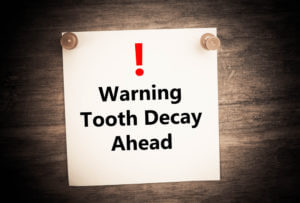 Cavities affect at least one permanent tooth of over 90% of adults in America, and remain the number one chronic disease among school-aged children. The prevalence of cavities, coupled with the fact that they directly destroy your tooth’s structure, makes them a prominent cause of tooth loss (though gum disease is the top cause). To help you save your tooth from the destruction of cavities, we explain the tooth decay that causes them and how you can protect your smile from it.
Cavities affect at least one permanent tooth of over 90% of adults in America, and remain the number one chronic disease among school-aged children. The prevalence of cavities, coupled with the fact that they directly destroy your tooth’s structure, makes them a prominent cause of tooth loss (though gum disease is the top cause). To help you save your tooth from the destruction of cavities, we explain the tooth decay that causes them and how you can protect your smile from it.
What is a Cavity?
A cavity is a small hole that forms in the structure of your tooth, and when left unchecked, continues to grow and consume your tooth structure. Cavities are caused by a bacterial infection known as tooth decay, and by the time the disease advances enough to form a hole, your tooth may already be in a struggle for its survival. Like gum disease, tooth decay is progressive, and once it sets in, the damage will continue and your cavity will grow larger (leading to extreme discomfort) until you actively treat it by removing the decay.
From Tooth Decay to Cavities
The decay that leads to cavities begins rather quietly, with the excessive buildup of dental plaque in the face of inadequate dental hygiene. This sticky substance is comprised of over 600 different kinds of oral bacteria, and when some of them consume sugars and carbs from your meals, they convert them into acid that depletes your teeth of minerals and weakens its strong protective layer of enamel.
Over time, bacterial acid can render tooth enamel useless, allowing bacteria to slip past it and infect the vulnerable main structure of your tooth underneath it, called dentin. As the infection progresses, it literally decays your tooth structure, causing cavities to form and grow until treated.






